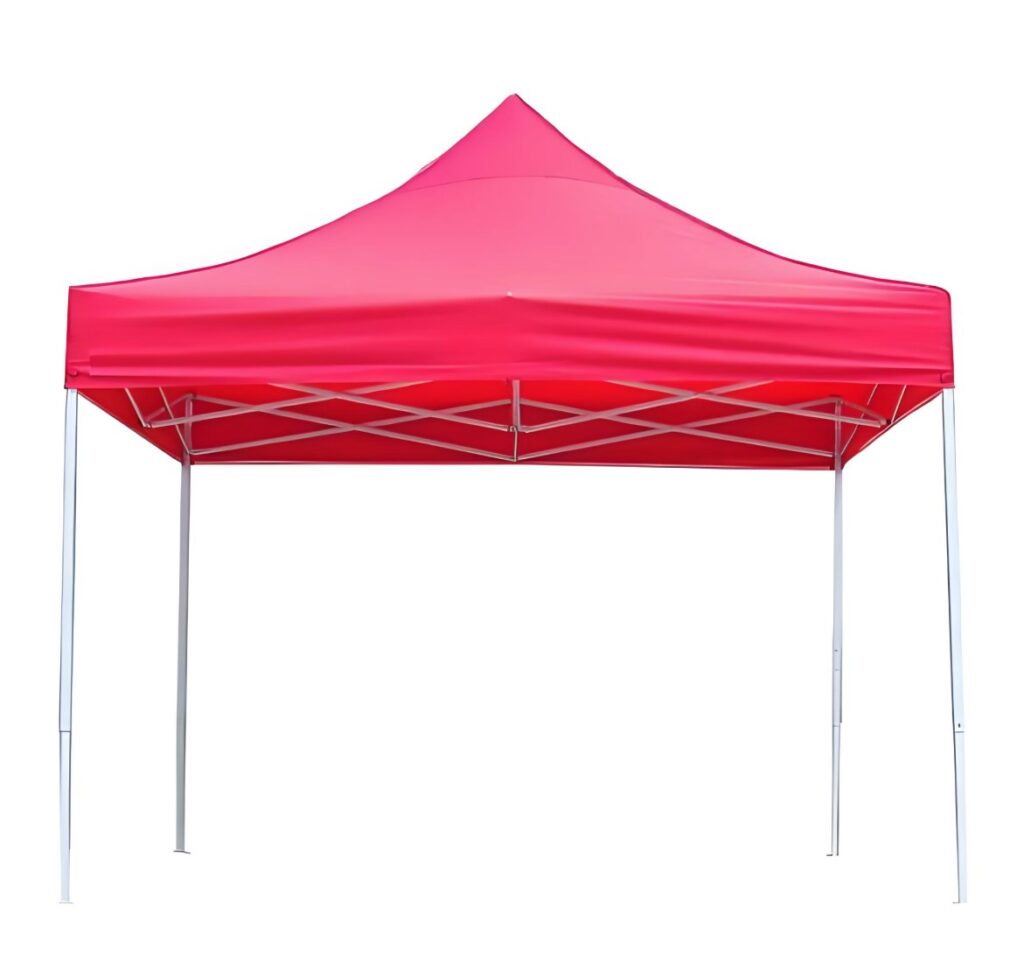Folding tents — sometimes called advertising tents or sunshade canopies — are probably the most practical shelters for outdoor use. You’ll see them everywhere: at trade shows, open-air markets, or even small promotional booths by the roadside. They’re quick to set up, easy to move, and surprisingly sturdy for something so lightweight.
What makes folding tents so popular is their simplicity. You can open or close one in minutes — just press the spring buttons at the corners and lock it into place. That’s it. Still, it’s worth handling them carefully. The fabric, especially around the corners, can tear if you’re rough.

What Folding Tents Are Used For
A folding tent does more than just provide shade. It’s also a flexible advertising tool.
- It serves as a display booth during product promotions or brand events.
- It creates a recognizable presence for marketing activities.
- And, of course, it works as an advertising platform — perfect for printing brand logos, slogans, or event graphics.
It’s a small space, but when set up right, it can easily draw attention in a crowded outdoor setting.
Common Sizes of Advertising Tents
Folding tents come in several sizes — the most common being 2m × 2m, 2.5m × 2.5m, 2m × 3m, 3m × 3m, 3m × 4.5m, and 3m × 6m.
From experience, the 3m × 3m is the sweet spot: compact enough for easy transport, yet spacious enough for two to three people to work comfortably underneath.
Larger models like 3m × 4.5m and 3m × 6m are great for car shows, stage promotions, or anywhere you need a broader shaded area. Many manufacturers also accept custom dimensions if you need something specific.
Structure and Materials
A good advertising tent should be more than just functional — it should look professional, too.
Most high-quality tents use steel frames with a high-temperature baked paint finish, which resists corrosion and keeps the frame looking clean even after repeated outdoor use. The setup is fast — you can pull it open and lock it in place in minutes.
The frame tubing is typically made from 40mm square or flat steel, treated with protective coating to resist rust. The canopy itself is coated for waterproofing and UV resistance, making it tougher and more durable than standard fabric.
Despite its solid build, the tent is lightweight and fits neatly into most SUVs or camping vehicles — ideal for those who need to move often between events.
How to Use a Folding Tent
1. Opening the Tent
- Unpack the frame and canopy top.
- Open the frame halfway so it’s easier to align the fabric.
- Place the canopy top over the frame, matching the four corners, and fasten them using Velcro straps.
- Expand the frame to about 90–95% of its full size.
- Insert the spring buttons on each corner into the correct holes to lock them.
- Extend the legs to your preferred height — they’ll click and lock automatically.
- Once it’s fully expanded and stable, your tent is ready to use.
A quick tip: always double-check that all spring locks are secure before you step away — it prevents sudden collapses if the wind picks up.
2. Folding the Tent
- Press down gently on one of the diagonal crossbars to start folding the frame inward.
- Unlock all four spring buttons.
- Fold each corner toward the center carefully.
- Gather all parts neatly and store everything in the carrying bag.
Avoid forcing any part when folding — it’s usually better to take an extra minute than to bend a frame section.
Precautions When Using Advertising Tents
- Handle gently during setup and takedown; don’t toss or drop any parts.
- When unboxing, avoid using sharp knives that could slice the fabric.
- Store the tent upright, not flat, to prevent pressure or tearing.
- Always check screws and joints before use — loose parts can weaken the frame.
- If any pole bends or cracks, stop using it immediately and repair before reuse.
- On windy days, lower the tent height when unattended to prevent it from being blown over.
- When connecting multiple tents side-by-side, tie the legs together with zip ties or ropes for extra stability.
- Avoid using adhesive tape — it leaves sticky residue that can jam the sliding mechanism.
A good folding tent, when used correctly, can last for years and serve as both a shelter and a marketing tool. Whether you’re setting up for a local fair, a pop-up sale, or an outdoor exhibition, mastering these small details makes a huge difference in how professional — and stress-free — your setup feels.

Hi, I’m Clara Morgan, and I started this site out of a love for spending time outside—whether it’s backyard gatherings, camping trips, or cozy evenings under the stars. Over the years, I’ve learned that the best memories come from simple, meaningful outdoor experiences rather than expensive vacations or complicated plans.
This website was created to share those experiences and help more people enjoy outdoor living with ease and confidence. Whether you’re a parent searching for safe camping gear, a couple planning a weekend getaway, or someone looking to transform your backyard into a cozy retreat, this site is your go-to resource.
